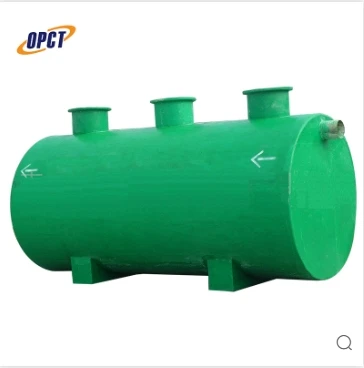When it comes to optimizing industrial operations, particularly in sectors like chemical production, oil refining, and agriculture, the role of a storage tank cannot be overstated. These tanks are fundamental to an effective storage and management system that ensures the smooth operation of numerous industries worldwide. The purpose of any storage tank is simple yet vital—it safely holds substances in liquid or gas form and sometimes even solids, maintaining them in optimal conditions until they're needed.

Understanding the different types of storage tanks is crucial for making informed decisions about which kind to implement in a given scenario. One common type is the fixed-roof tank, which offers a sturdy construction suitable for holding liquids with low volatility. For more volatile substances, floating-roof tanks are utilized to minimize vapor losses and reduce the risk of fires. Additionally, pressure tanks are designed for storing liquids or gases at pressures substantially higher or lower than atmospheric pressure, ensuring both safety and efficiency.
The material used in storage tank construction plays a significant role in their durability and efficacy. Tanks can be made from various materials, such as steel, stainless steel, and fiberglass-reinforced plastics. Each material has its set of advantages; for example, steel tanks are known for their strength and ability to withstand high pressure and temperature, while fiberglass tanks offer superior resistance to corrosion and chemical interactions.

A key aspect to consider when investing in storage tanks is their maintenance and longevity. Regular inspections, cleaning, and maintenance can significantly extend the lifespan of a storage tank. It's essential to have a robust inspection and maintenance schedule in place, ensuring that tanks are checked for signs of wear, corrosion, and structural integrity concerns. This not only ensures the safety of the storage but also preserves the quality of the materials inside, preventing costly losses or accidents.
storage tank
Choosing a storage tank should heavily rely on environmental considerations and local regulations. Governments worldwide have established stringent guidelines governing the materials that storage tanks can be constructed from and the types of substances that can be stored. Compliance with these regulations not only helps avoid legal repercussions but also aligns with best practices for environmental stewardship and sustainability.
Advanced technologies now significantly contribute to the efficiency and safety of storage tanks. The integration of IoT-based monitoring systems allows for real-time tracking of tank conditions, such as temperature, pressure, and volume levels. This continuous data stream helps in making timely decisions, optimizing storage conditions, and ensuring safety protocols are consistently met.
In deciding on storage solutions, the expertise of suppliers and manufacturers should be a consideration. A reputable provider will not only offer high-quality storage tanks but also possess the necessary certifications and experience to deliver products that meet your specific industry needs. Collaborating with reputable manufacturers ensures you benefit from their expertise, acquiring tanks that are appropriate for your operational needs and guaranteed to meet safety and performance standards.
Ultimately, investing in the right storage tank system is about securing the integrity of your stored materials and ensuring the operational efficiency of your enterprise. It's a strategic decision that impacts everything from production capabilities to financial performance. By leveraging the latest technologies, adhering to regulations, and choosing high-quality materials, businesses can build a reliable storage solution that safeguards both their resources and their reputation. The journey to finding the perfect storage tank may be complex, but with careful research and informed decision-making, industries can achieve a harmonious balance of safety, efficiency, and sustainability.




